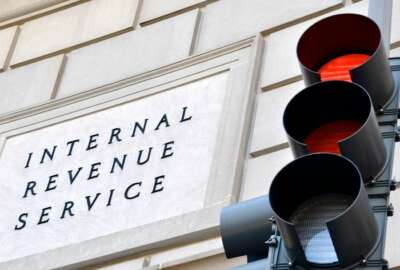As the IRS looks to implement its new long-term strategy and sees a spending boost on the horizon from Congress, David Kautter, the agency’s acting commissioner, plans to hire 1,700 full-time additional employees ahead of next year’s tax filing season.
In addition to hiring more IRS customer service employees, Kautter has also called for hiring more attorneys within the agency’s Office of Chief Counsel to help implement the reform law that President Donald Trump signed late last year, according to the National Association of Enrolled Agents, an organization for certified tax professionals.
In order to implement the new tax law, the IRS says it will have to upgrade more than 140 computer systems and update more than 450 tax forms by next year’s filing season.
Kautter also announced the hiring plan at the 2018 American Payroll Association (APA) Congress last month.
Robert Kerr, the executive vice president at NAEA, expressed concern over the feasibility of the IRS hiring so many tax professionals in less than a year.
“The agency has a variety of needs and is handicapped by the fact that many of the competencies that lead to excellence are acquired only over the course of time,” Kerr said in a statement. “IRS cannot generally create great revenue agents or revenue officers in three or six months. Training is essential. Targeting areas of greatest need is essential, and probably tougher than those of us outside the service recognize. Managing staff size by attrition, as IRS has been doing for years, is suboptimal.”
In May, the House Appropriations Committee released a spending bill that would fund the IRS by more than $186 million above current levels.
Of those funds, $77 million would go toward implementing the tax reform law. The bill would also give the IRS’ Taxpayer Services division an additional $31 million above current levels to improve its rate of answering calls on its tax-help hotline, prevent fraud and shore up its cyber defenses.
But just two weeks ago at a Senate Appropriations Committee hearing, Kautter defended the Trump administration’s fiscal 2019 budget plan for the IRS, which he estimated would cut more than 2,200 full-time jobs at the agency.
Building the IRS workforce of the future
Beyond the acting commissioner’s comments, the IRS’ recently released strategic plan also calls for building up the agency’s workforce to meet future demand.
“Our diverse workforce is integral to our success. As we confront the challenges of the future, we’ll continue to develop top talent with in-demand skillsets like data analytics and cybersecurity,” Kautter wrote in a statement following the release of the workforce plan.
The 2018-2022 strategic plan, which was put together by a team within the Chief Financial Office with input from the Treasury Department, has six key priorities:
- Empower and enable all taxpayers to meet their tax obligations.
- Protect the integrity of the tax system by encouraging compliance through administering and enforcing the tax code.
- Collaborate with external partners proactively to improve tax administration.
- Cultivate a well-equipped, diverse, flexible and engaged workforce.
- Advance data access, usability and analytics to inform decision-making and improve operational outcomes.
- Drive increased agility, efficiency, effectiveness and security in IRS operations.
According to the report, 27 percent of the IRS’ workforce is eligible to retire by the end of this fiscal year. Meanwhile, employees age 25 or younger make up less than half a percent of the agency’s workforce.
“Succession planning and knowledge transfer are critical to passing on the leadership skills and institutional knowledge necessary for continued effective tax administration,” the report states. “In addition to preventing knowledge gaps, we must also develop a workforce capable of responding to the demands of the future. This means attracting, developing and retaining employees with advanced skillsets,” such as cybersecurity and data analytics skills.
The strategy also aims to narrow the “tax gap,” or the difference between what taxpayers owe and what the IRS collects. The agency estimates that taxpayers pay just over $2 trillion of the $2.5 trillion in revenue it should be collecting each year.
Better taxpayers services – online and offline
If Congress does give the IRS a funding boost for taxpayer services, the agency has a plan to make the most of that money.
Under the five-year strategy, the IRS seeks to broaden the range of services it offers online and enhance the IRS.gov interface to make it more user-friendly.
“Our taxpayers increasingly expect high-quality service akin to what they receive in the private sector,” the plan states. “As a direct service provider, the IRS remains attuned to taxpayer preferences and needs.”
In fiscal 2016, the IRS had more than 384 million online interactions with taxpayers, which cost only a fraction of its traditional phone, in-person and correspondence-based tax help offerings. However, the IRS says it remains committed to providing “multi-channel offerings” for taxpayer assistance.
For taxpayers who are less tech-savvy, the IRS is seeking to improve its partnerships with tax-help organizations.
In fiscal 2017, IRS-certified volunteers with the Volunteer Income Tax Assistance and Tax Counseling for the Elderly programs prepared 3.6 million federal tax returns.
The plan also calls for improved partnerships between the IRS, state tax agencies, and private-sector companies through the IRS’ annual security summits.
Since convening its first security summit in 2015, IRS has found taxpayer-reported cases of identity theft have decreased by 64 percent.
Copyright
© 2024 Federal News Network. All rights reserved. This website is not intended for users located within the European Economic Area.

